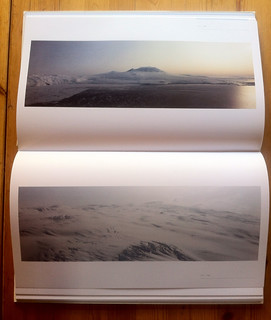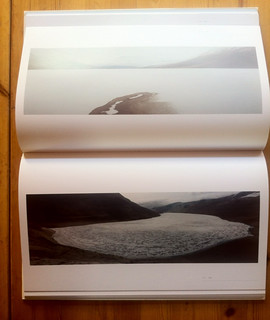It’s just as well that nobody ever reads this stuff, because I have feeling this could be one of the most unpopular posts I’ve ever written, comparable to the time I dared to be critical of the great Andy Rouse.
David duChemin styles himself as a World & Humanitarian Photographer. Apart from this, he has authored a series of vision-oriented semi how-to books on photography, which, if you’re prepared to roll with his world view, are interesting. He seems like a very genuine, likeable, enthusiastic person, and he’s built up a great brand and a loyal following. Me, being a cynic, I find it quite hard to avoid a certain sense of nausea when he goes overboard with the (non-denominational) preaching and the hey-what-a-wonderful-world, but I guess that’s my loss. He’s also built up an impressive eBook publishing venture, Craft & Vision, providing a platform for his own pamphlet-length books on various topics, and also those of various other authors. They’re inexpensive, and worth a punt. I’ve read most of them. Some I enjoyed, others less so, but duChemin’s own series of collections of essays are definitely worth your time and money. Finally, he also launched the Photograph eMagazine last year, which I reviewed, and subscribe to.
Along the way he’s been prone to downplay the importance of gear, which is fine, but also to some extent technique, which sometimes is ok, but sometimes not. For example, saying that a photo shot at f/22 and ISO 800, which would have been much better at f/8, is like so because he got too involved in the shot to notice … well ok, I do that too. And then usually I realise that the photo just has to be binned, however good it might have been.
Which brings us to his magnum opus to date, his first monograph, “SEVEN; Seven Continents + Seven Years: A Photographic Journey”.
He states “I wanted to create something beautiful, inside and out. Something that was a delight to touch and hold. I wanted something that would inspire and show you the world the way I see it, in these fleeting glimpses of beauty, hope, and wonder”. It’s a lofty ambition, which raises great expectations.

Physically the book is quite nice, but not exceptional. The dark brown linen hardcover binding doesn’t really fit with the content, in my opinion. But what immediately strikes me is that the layout & typography are a bit clunky. This is strange, because actually the quality of the layout and presentation of many Craft & Vision eBooks exceeds the contents, and his web site is very elegant. But online, electronic layout practice does not simply translate to print, and I think this is the problem. I can’t help but compare with Bruce Percy’s books - there are some parallels between Percy & duChemin, but it is clear that Bruce is a talented, meticulous designer as well as a fabulous photographer, and his book designs are exquisite. SEVEN suffers from far too big typefaces, and a serious lack of white space to let the text content breathe. The image layout is basically “default”. Photos are overwhelmingly centre page, with little thought of dynamics. Tellingly, the digital version is MUCH easier on the eye, and the photography looks and works better.
Ok, so what about the photography ? Well, I’m not enjoying this at all, but honestly, for what my opinions worth, left to sink or swim on their own merits, rather than supporting essays or blog posts or how-to books, for the most part they do a good imitation of the Titanic.
Individually there are some good, or even great photos. Some examples are Plate 56, a great street candid, Plate 136 (which is included on the product page), one of the few landscapes I like. But really, I’m just trying to find some positives.
photograph © David duChemin

photograph © David duChemin
But there’s just too much chaff, and a lot of it really doesn’t do him any favours. A candid photo of an orange juice vendor in India inexplicably focuses on a pile of oranges rather than the vendor. Four shots of a whaling boat hulk on Deception Island - which world+dog has photographed - when one would do - easily. Many shots just seem to be strangely devoid of content or dynamic. Far too much backlighting which just doesn’t work. The shots from Iceland using a tilt/shift lens hand-held were maybe entertaing on the blog, but here, especially in context, they’re a bit ridiculous. The best stuff is a set of commissioned posed portraits of villages in Loiyangalani, Kenya, which is very competent commercial photography, but really looks like an outtake from a Benetton shoot.

Nice oranges, but, really…? photograph © David duChemin
But the biggest problem is that there is no coherence to this book. As a monograph, one would expect some kind of continuity or visual narrative, but it just jumps all over the place. From black & white candids to wide screen landscapes, from the inevitable photos of colourful, wrinkly, gap-toothed Asiatic ancients and cute kids, back to some more black & white candids, jumping to the weird Iceland stuff, to some even weirder stuff from Venice, to a set from an Antarctic trip where clearly the weather wasn’t playing along. It’s not giving much of a sense of a style or vision. The total opposite of Bruce Percy’s “Iceland - A Journal of Nocturnes”.
SEVEN is very ambitious, but ends up drowned by a wildly over-reaching concept of showing the whole world, and therefore having to include work of quite considerably varying quality just to “tick” each continent. The New Zealand photos are particularly disposable. Perhaps a much stronger approach would have been to structure it as a set of self-contained mini-portfolios from a selection of global destinations. Basically, it needed a strong editor, and a layout artist.
One of the reasons I buy photography books, especially from less well-known photographers, is because I like to support their work. I’ll continue to buy Craft & Vision eBooks, and I don’t regret the not inconsiderable cost of SEVEN. I would normally say this, or indeed expect to say it, but I have to say for all the locations in the book which I have also visited, I’ve either got better shots, or similar shots (near identical in the case of Milford Sound) which I’d never even think of publishing. I expect books like SEVEN to contain photography far better than I could achieve. It’s a bit of a shock when they don’t.
Postscript
Despite the fact that nobody will read this, I’ve hesitated a lot before publishing it. I’ve searched for other reviews of the book, and found just one, which frankly doesn’t say very much… one can infer anything from it. So why publish such a negative review, especially when I really, really wanted to love this book? Who am I to say such things? I think it’s a reaction to the massive dumbing down of photography everywhere, the “great capture, please visit my page LOL” theme that runs through the community these days. SEVEN unfortunately to me seems to ride on that sort of empty praise, and sometimes line have to be drawn. It should, and could have been so much better. And yeah, I know, my stuff sucks and I have no right to criticise genius etc etc. I know. Save your breath. It’s not the point.










